- Joined
- Jan 6, 2013
- Messages
- 5,574
- Reaction score
- 11,213
1. The History
Pen-yr-orsedd Slate Quarry is located near the village of Talysarn in the Nantlle valley in North Wales. It was first developed in 1816 as an open working, and subsequently, under the ownership of the Darbishire family, mills were built on three successive levels. The first mill was built in 1860 and two years later in 1862 the first connection to the 3 ft 6 in Nantlle railway was made which extended to all but the highest levels of the quarry. This allowed the carriage of slate to the quay at Caernarfon. A second integrated mill was added in 1870. In 1882 the number of men employed at the quarry had reached 230 men with an annual output of over 8,000 tons. Output further increased in the 1890s when a larger upper mill was built in 1898 as employment increased to over 600 men.
The quarry consisted of a series of pits and a series of four aerial ropeways known as 'Blondins' and their Bruce Peebles electrical equipment which were installed in 1906. These were able to lift trucks of slate from the pit and bring them to the side of the mills for processing.
O/S map extra from 1900 showing the Pen Yr Orsedd:
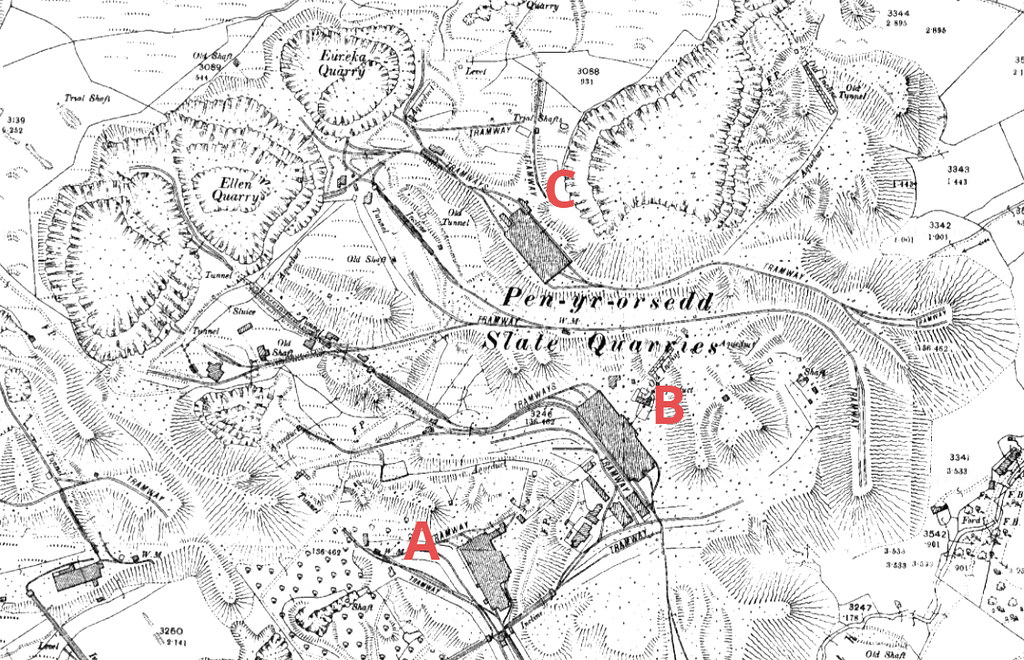
Key:
A – lower levels including the old slate mill
B – Mid levels including the admin block and wagon workshops
C – top levels including the blondins and main cutting shed
By 1937, despite the decline of the Welsh slate industry, there were still 351 workers employed at the site. When the Nantlle railway closed in 1963 road transport took over. It also the last quarry in the vale that commercially produced slate until its closure in 1979. The quarry remained in subsequent use, albeit on as small scale, and a lorry road was built down into one pit, rendering the ‘Blondins’ obsolete. After then until production ceased completely in about 2000 and the site has been abandoned ever since, bar the top-level mill which was used for storage.
2. The Explore
This one is a revisit for me. The last time I was here it was early one sunny July morning. With revisits, you always see things you didn’t see first time around plus different weather conditions, quite literally, cast a different light on places. This was very much the case here! The weather couldn’t have been worse. It was spitting when I first arrived but by the time I’d reached the top level, the weather had gone “Full Welsh”. Hence after I came out of the main shed, I headed straight back down to my car in the vain hope I wouldn’t get a complete soaking. This turned out to be an epic fail. But well worth the effort. So, not as epic as Dinorwic or Maenoffren but still a fab explore.
Previous report HERE. Report - - Pen-yr-orsedd Slate Quarry, Talysarn, North Wales, July 2020 | Mines and Quarries
3. The Pictures
And so the climb begins:
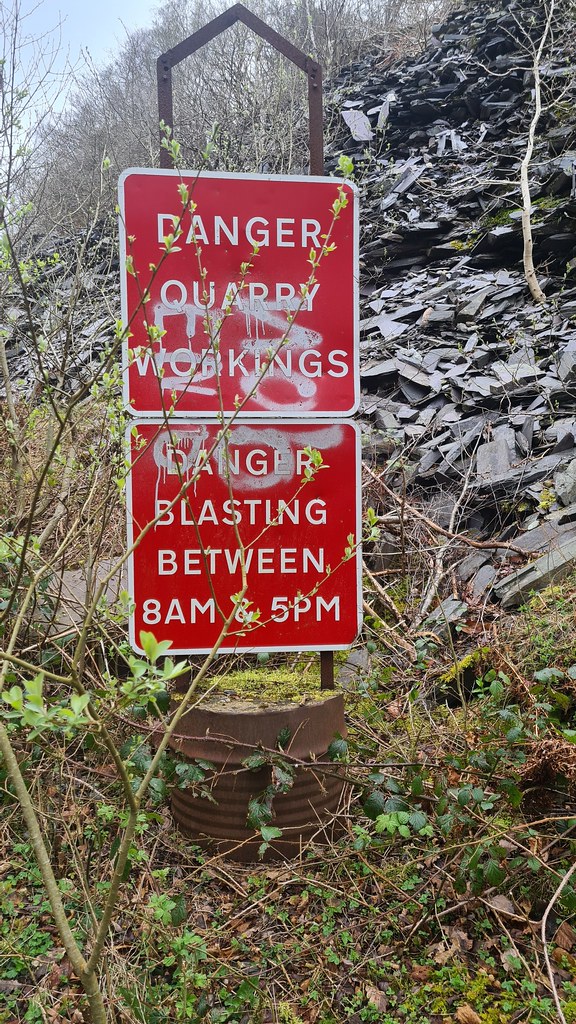
Saw these old buildings off in the woods to the left on the way up to the lower levels:
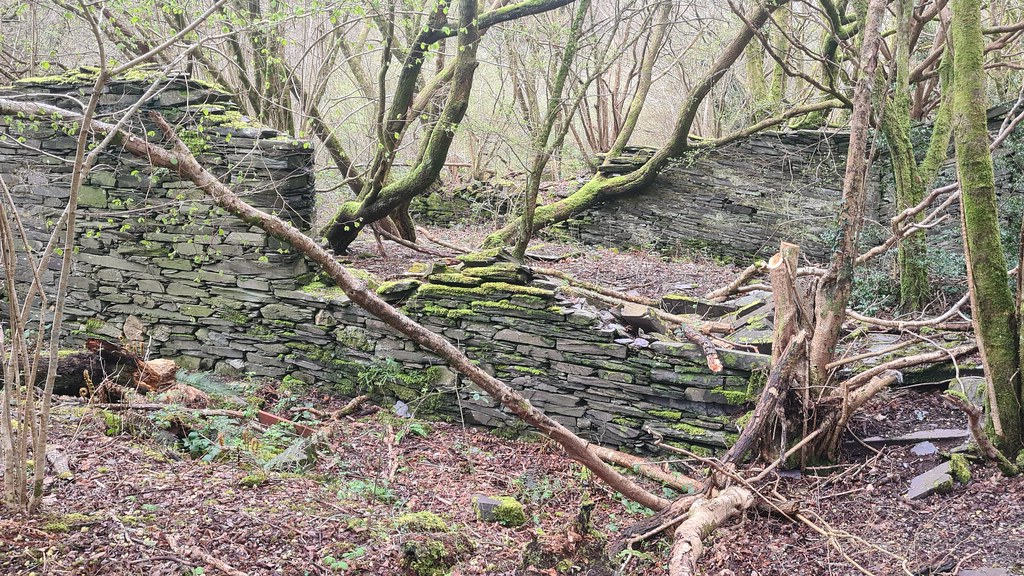
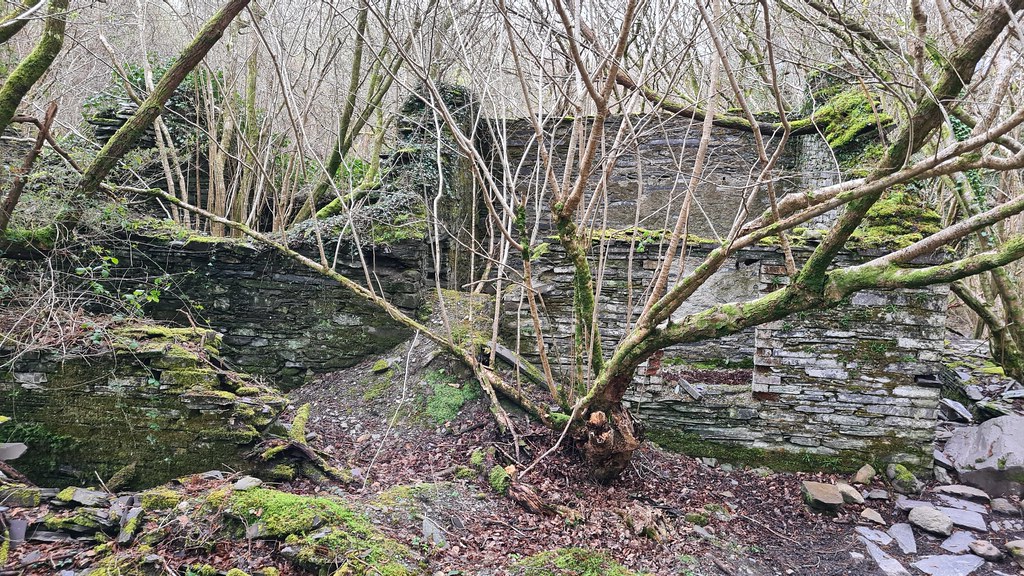


On to the lower level:
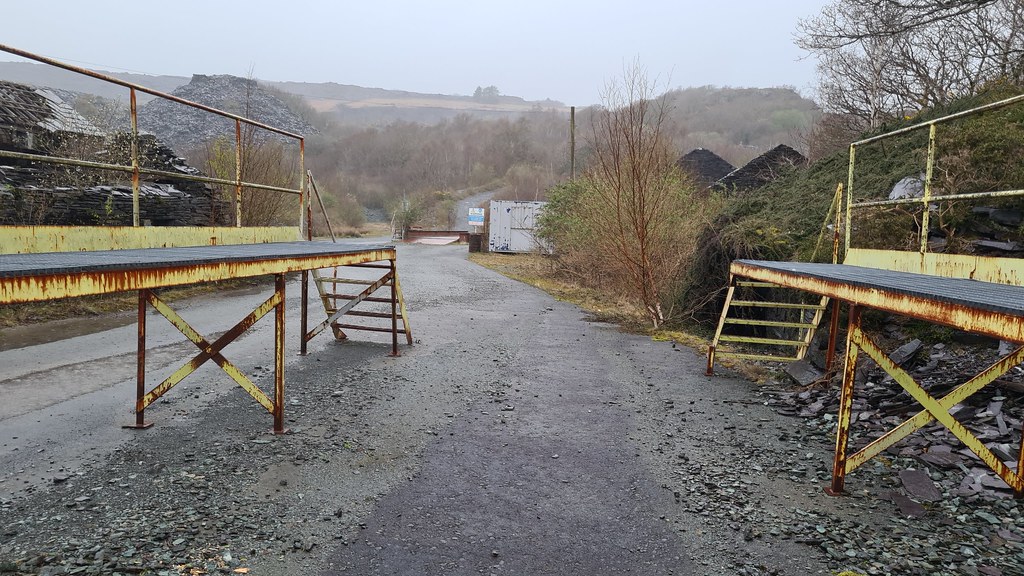
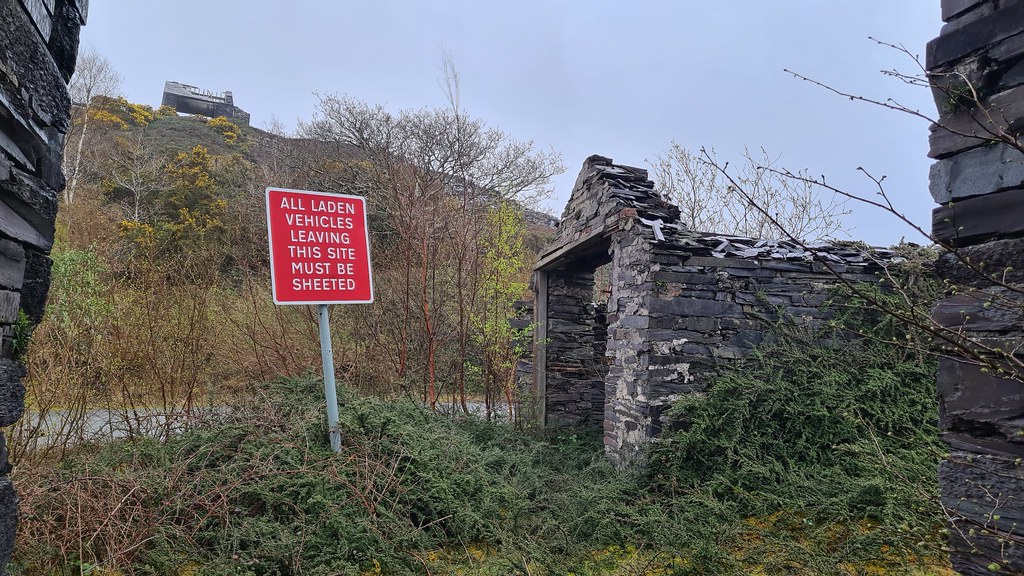
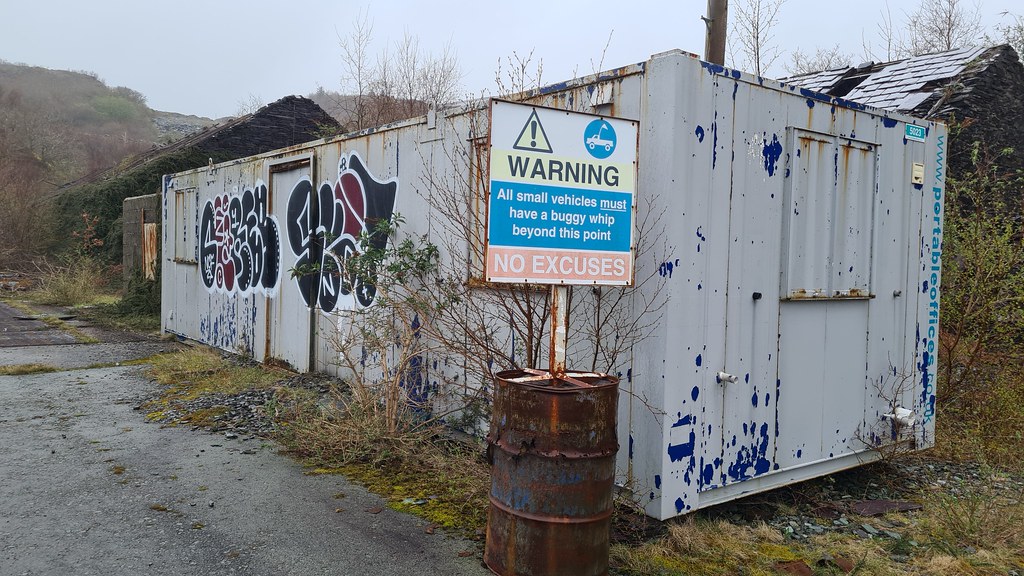
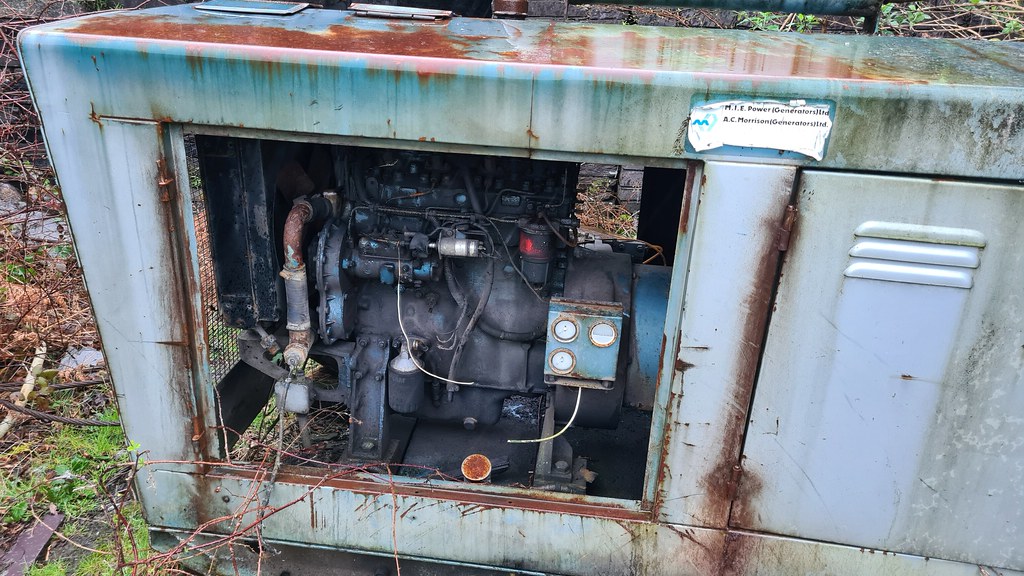
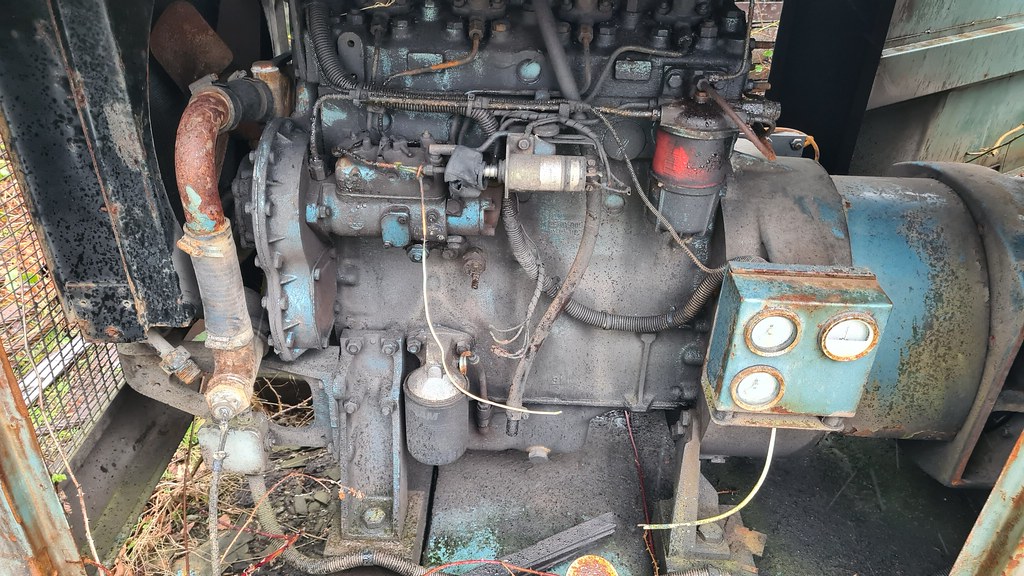
Quick peek in the old lower slate mill:
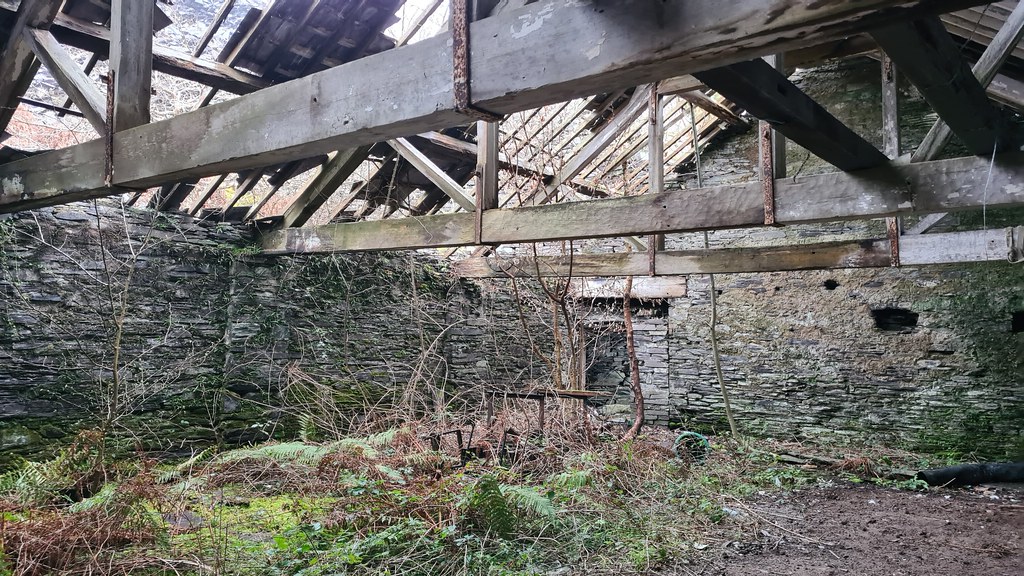

Pretty much a shell now:

These old drive shaft wheels are nice though:
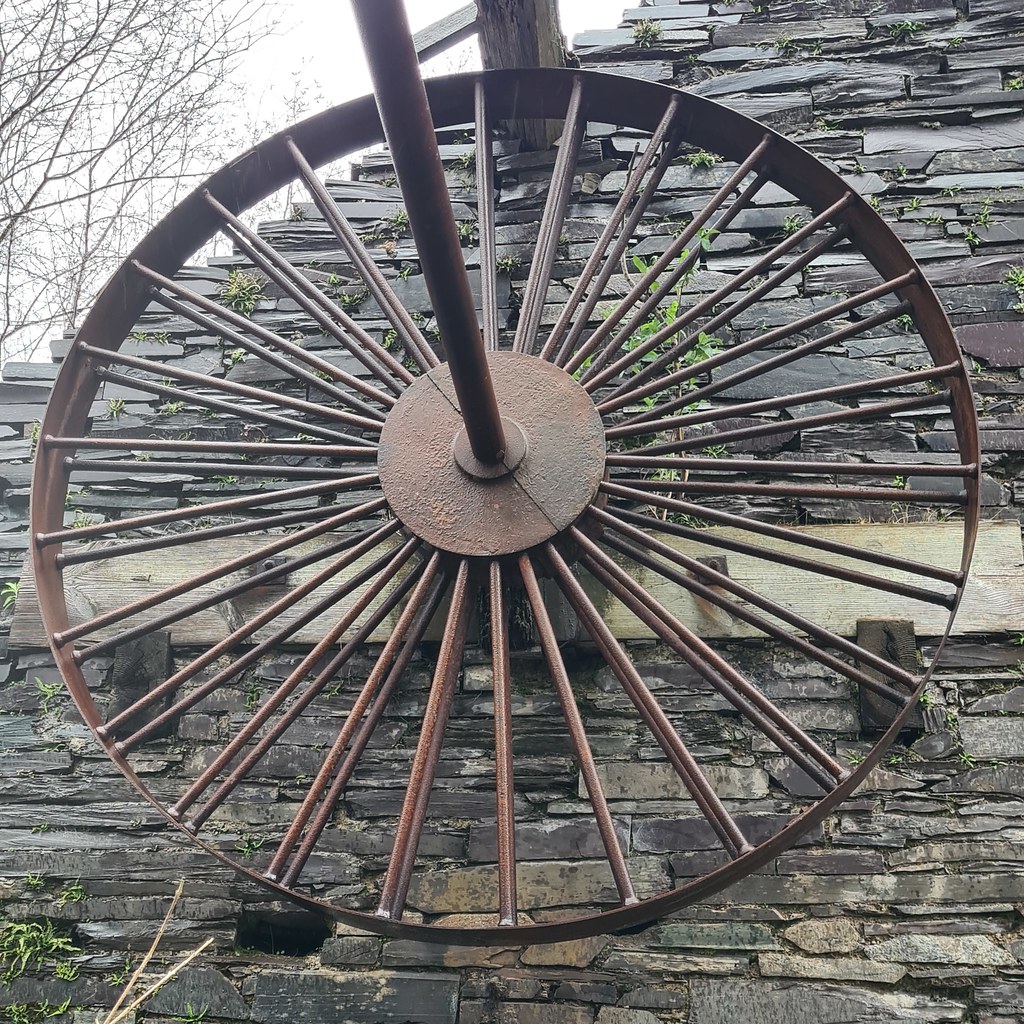
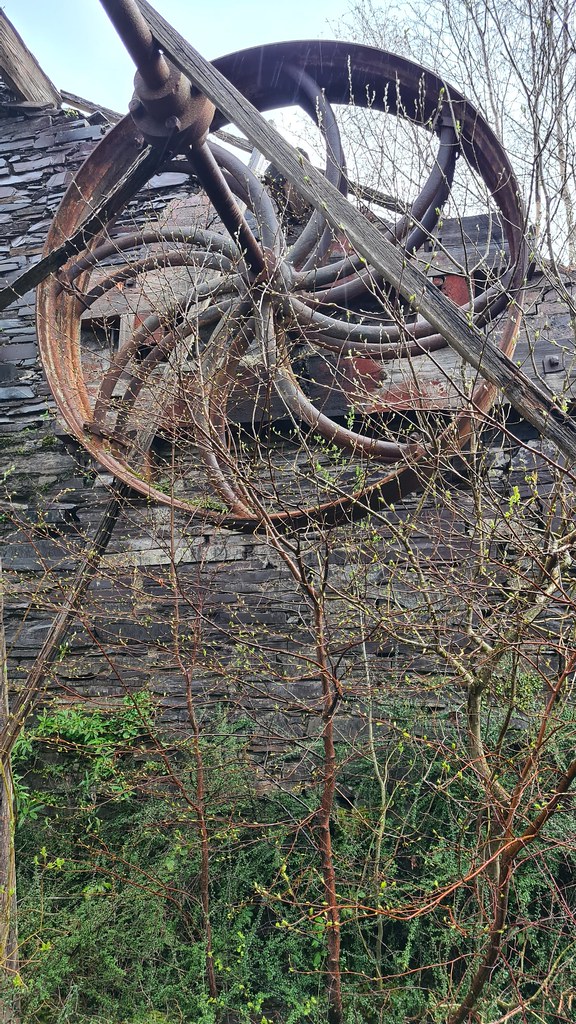
And up to the next level. A flat-bed slate cutter:
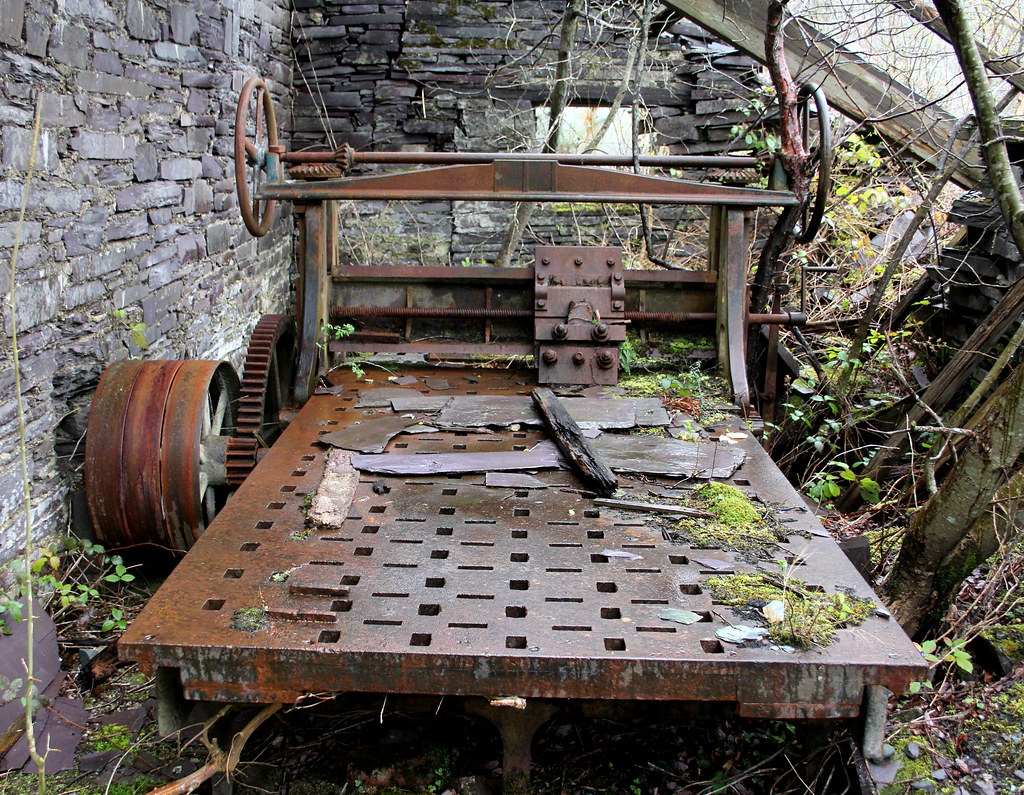
First on to the admin/accommodation block:
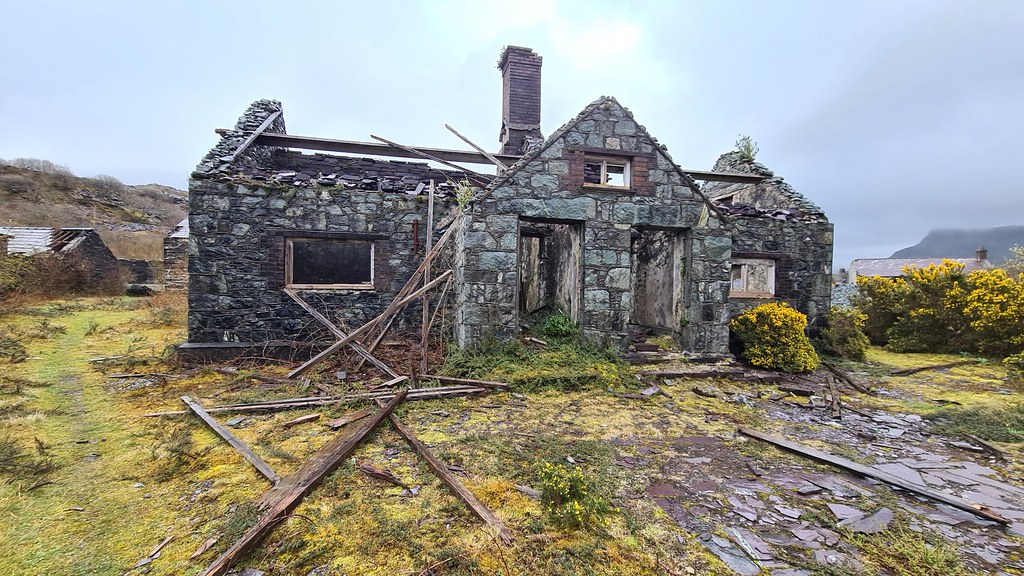
Still some of the old range left here:
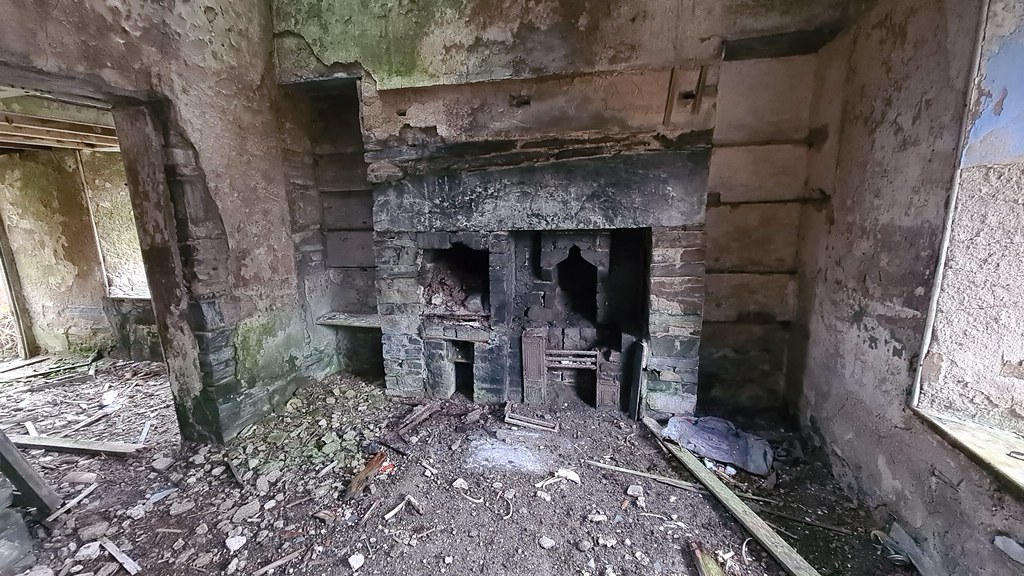
Not too sure what this was:
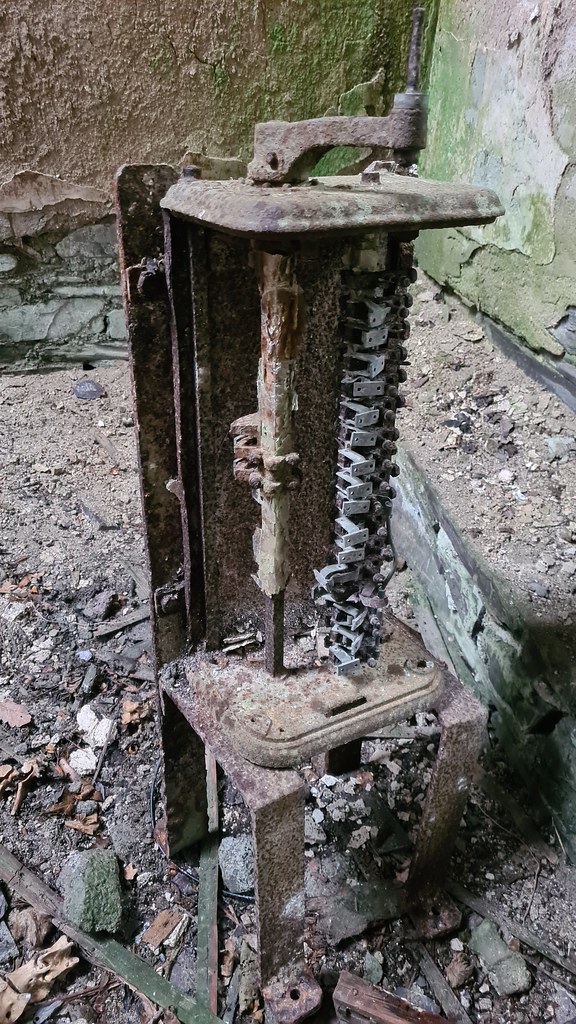
Otherwise it’s slim pickings here:
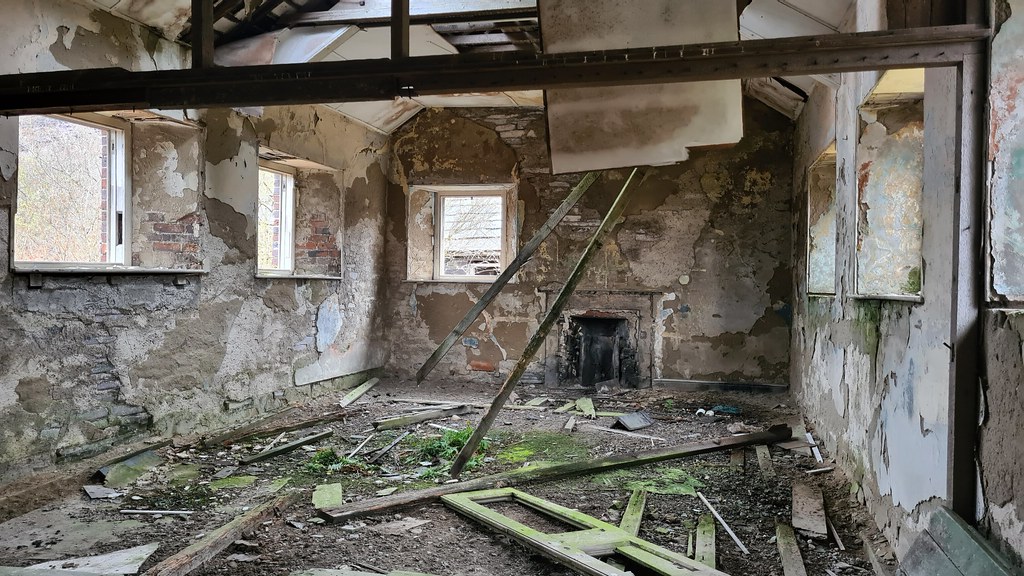
On to the wagon workshops:
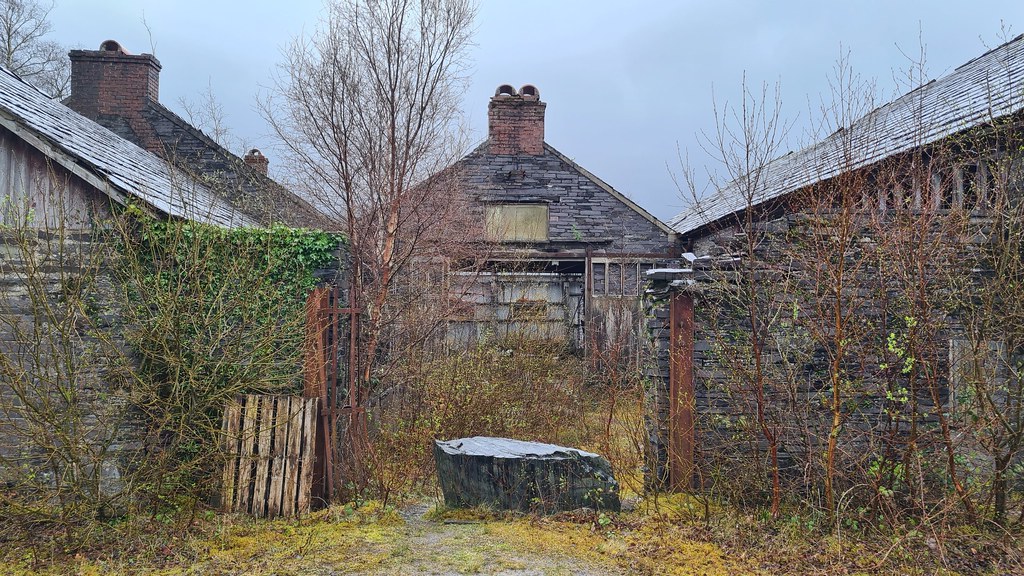
In we go:
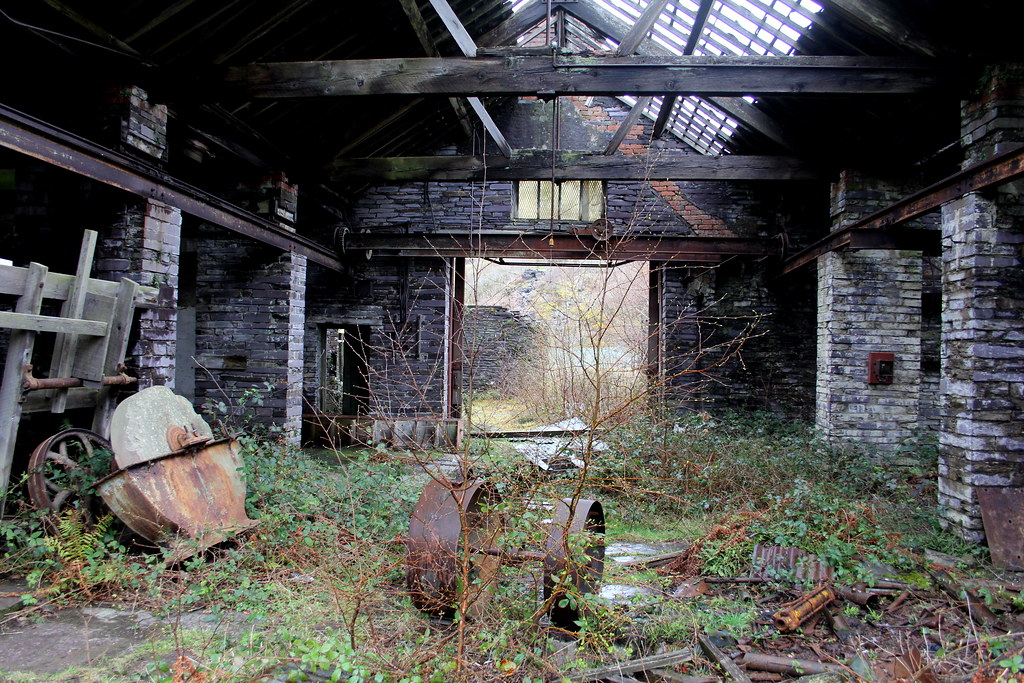
Wheel shaft drives:
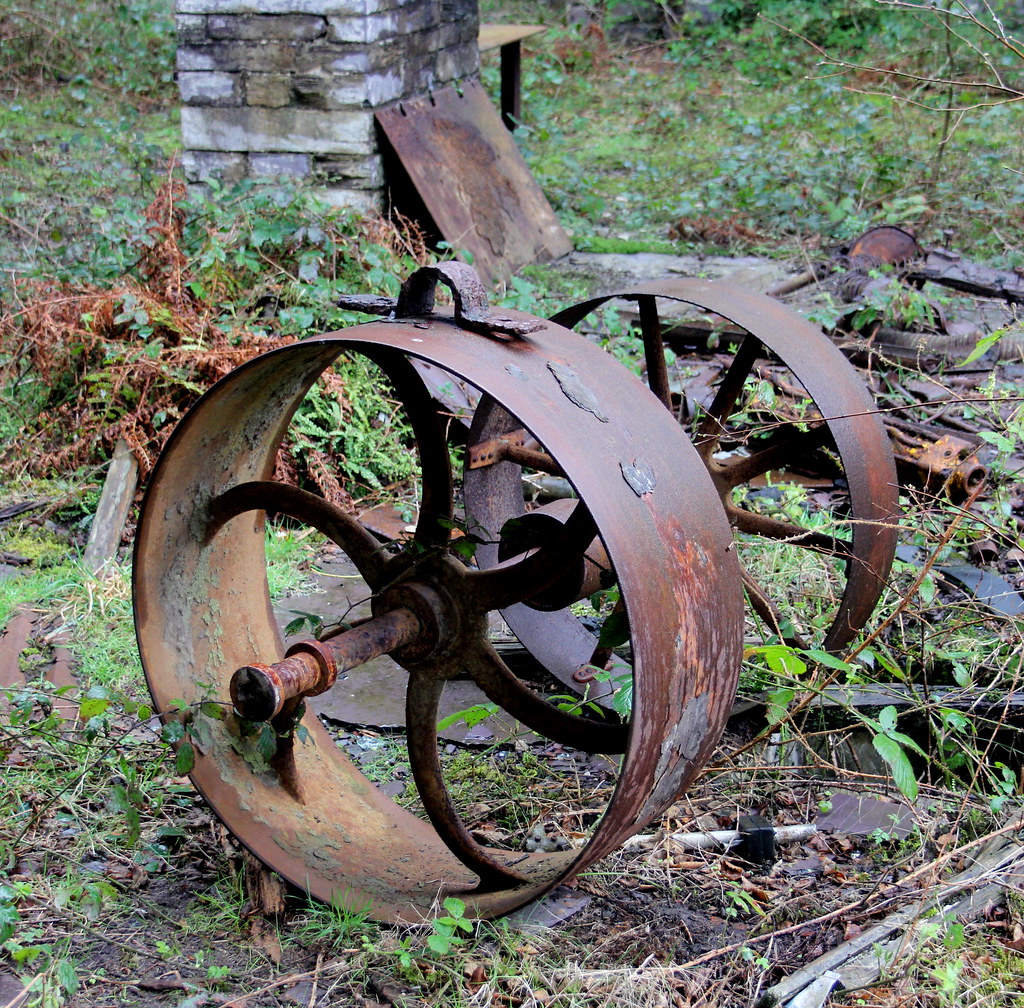
Love this old slate cutter made by Robinson and Son’s of Rochdale:
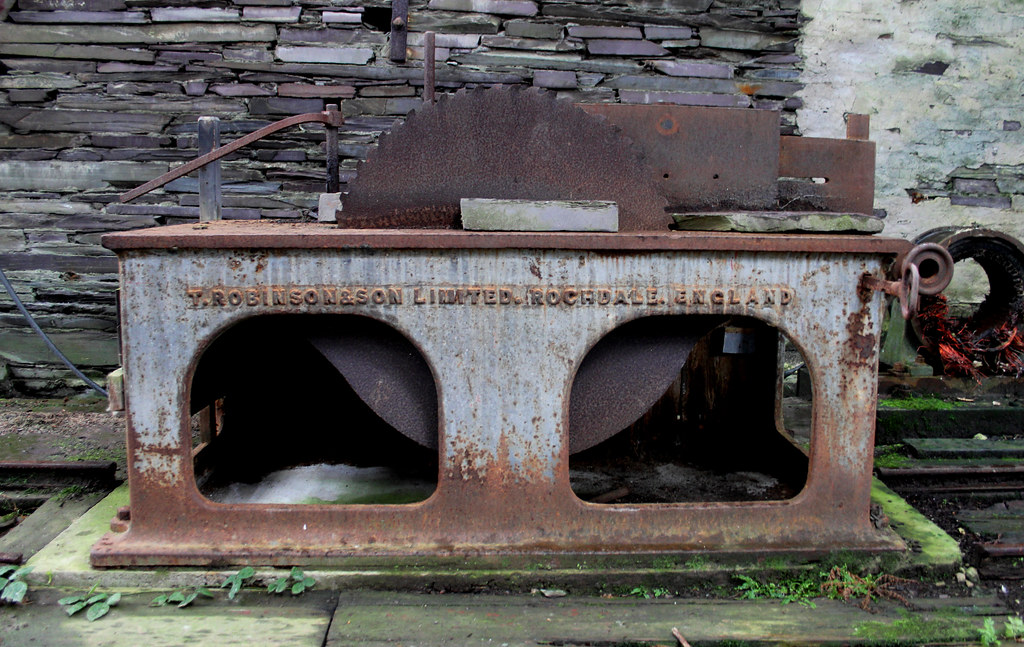
Some sort of vertical cutting machine:
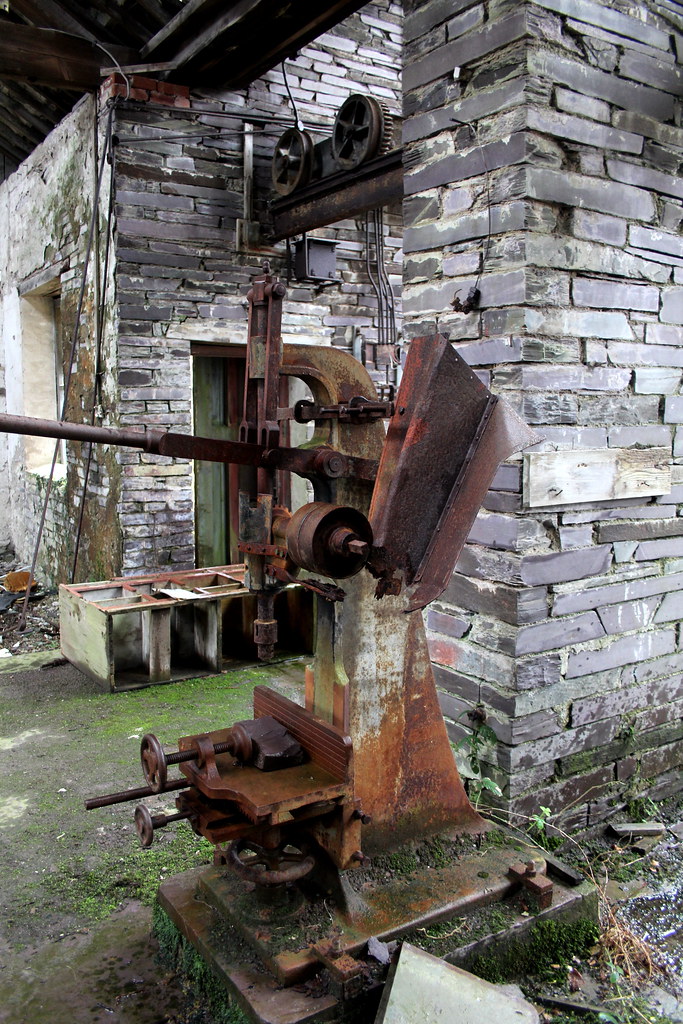
And this little fella a floor level:
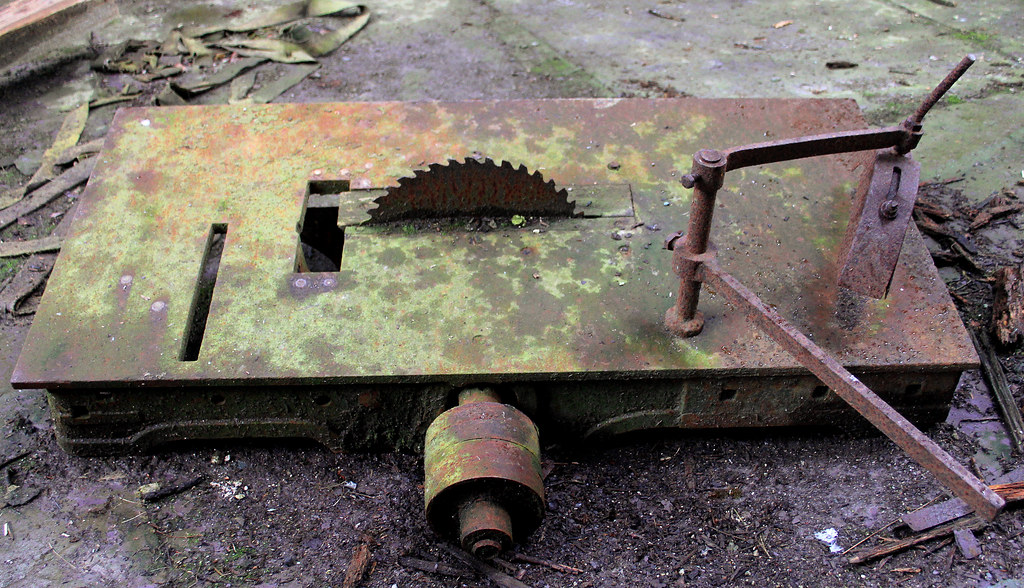
An old grinding wheel:
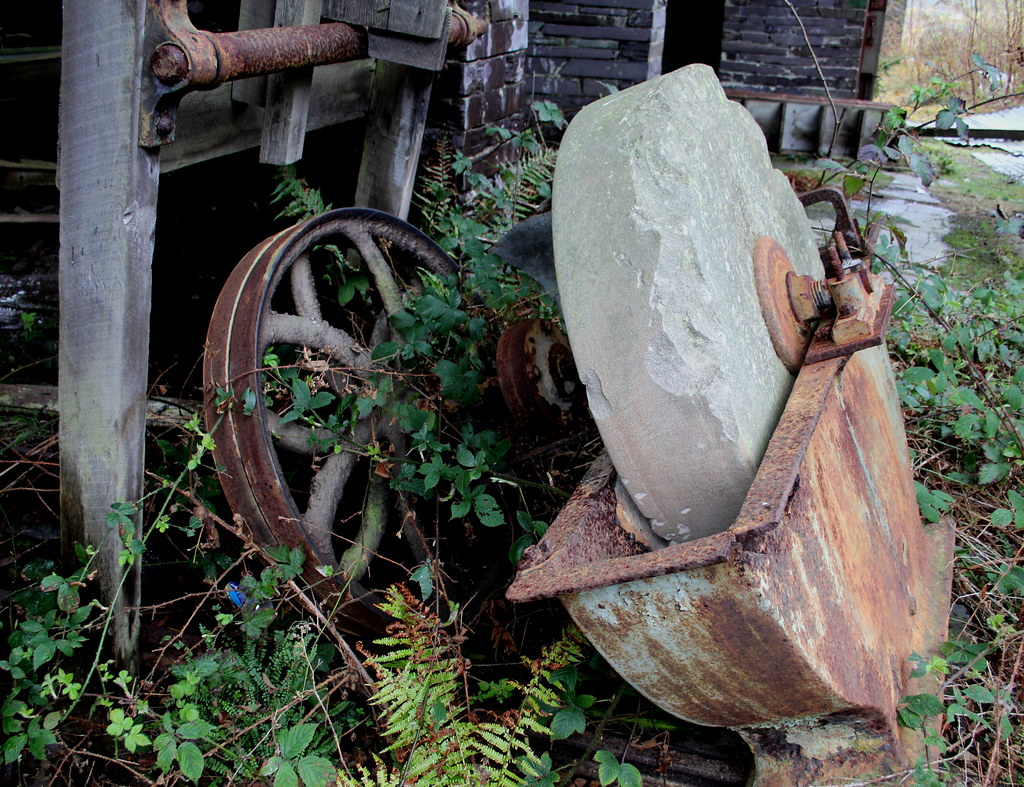
And the cutest turntable you are ever likely to see:
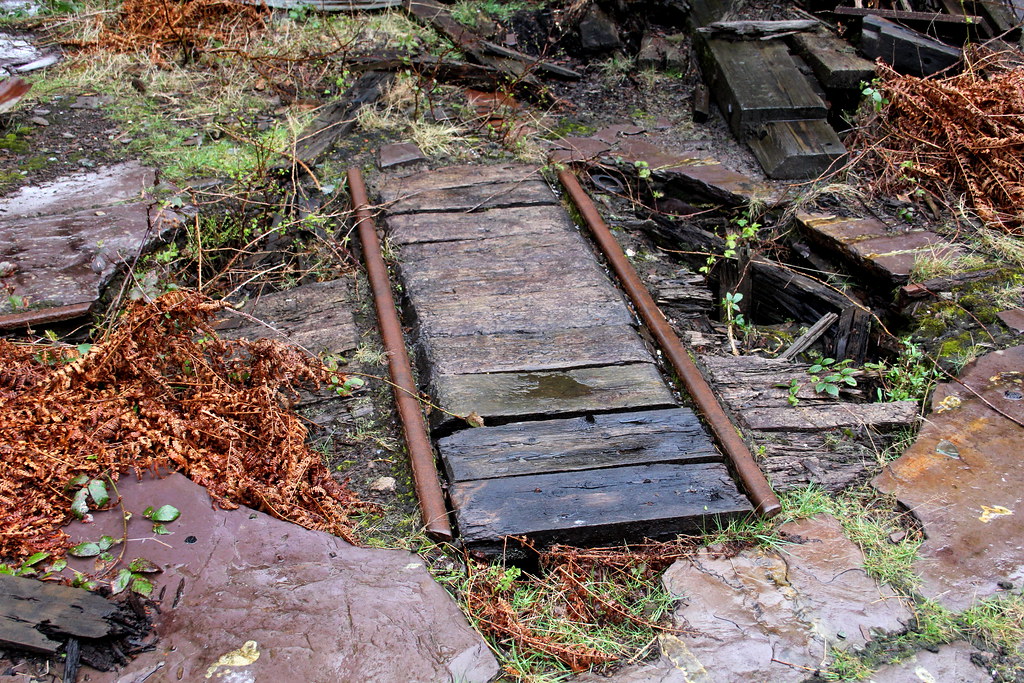
Some old wooden storage:
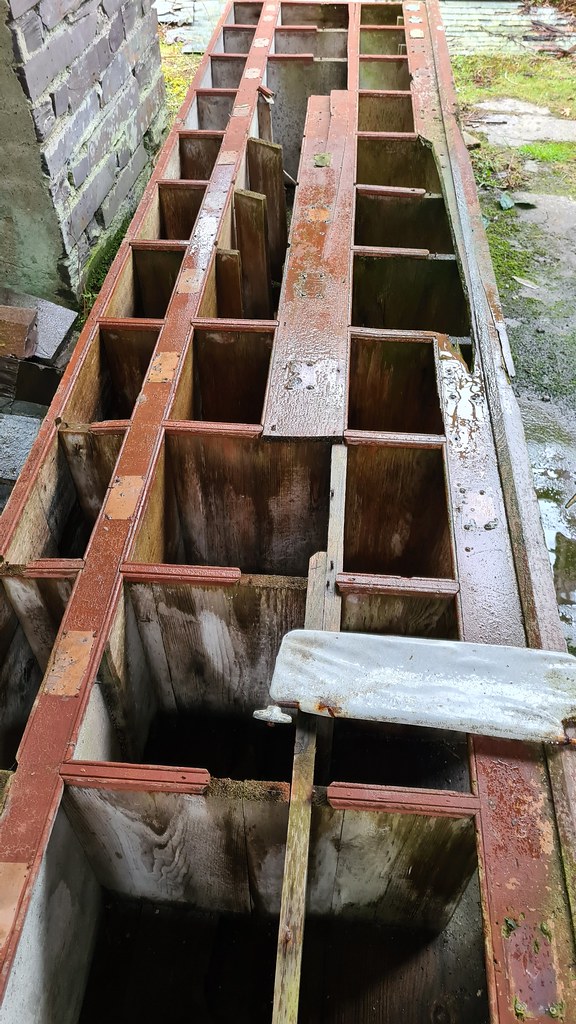
Overall, a nice part of the quarry:
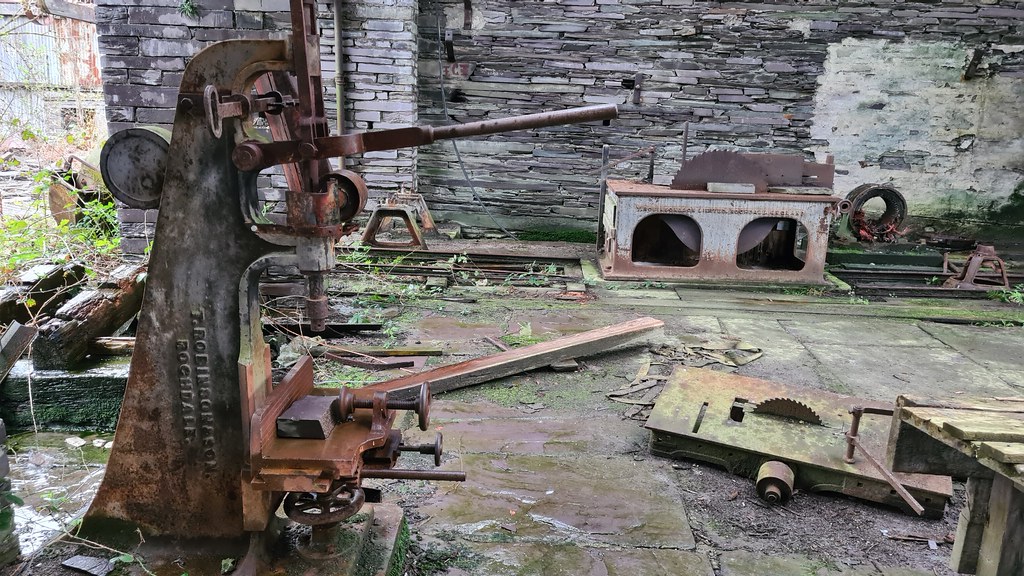
This looks like a dedicated storage area:
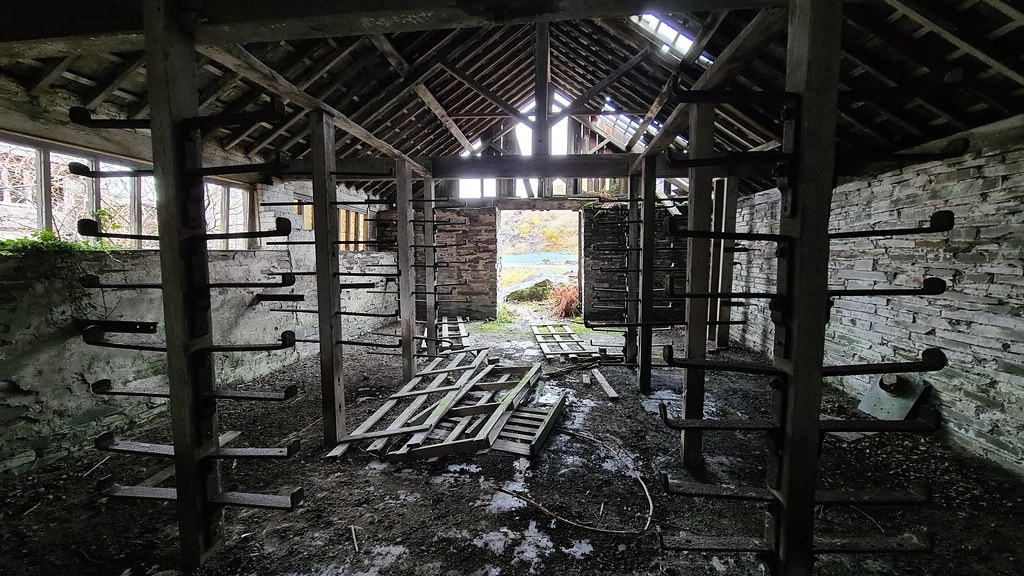
The proverbial rusty hook!
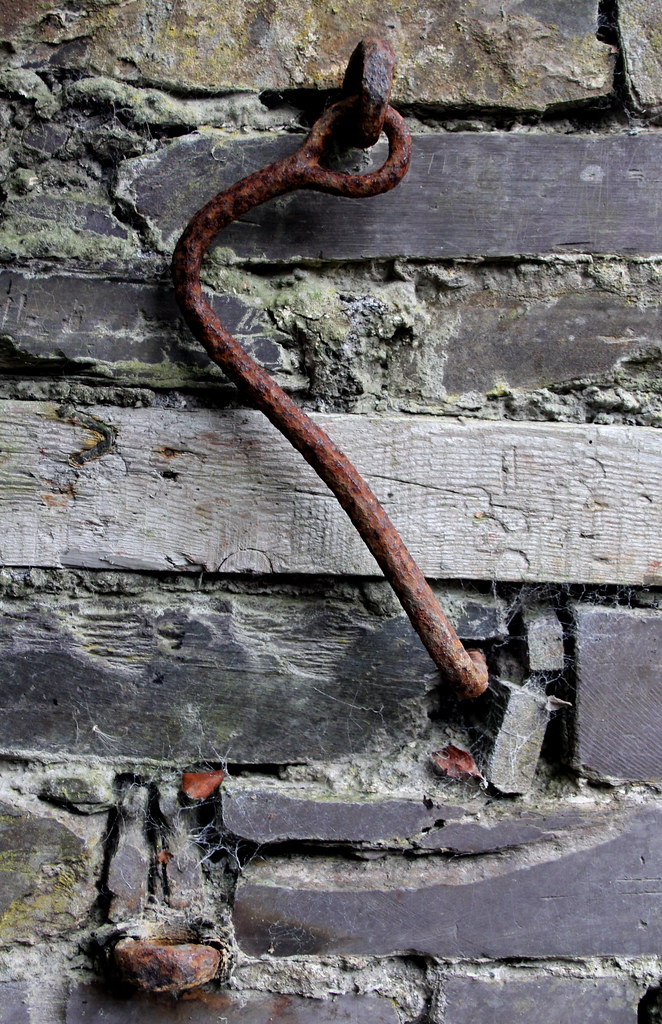
Looking back over the mid-levels:

And the miners steps up to the top level:
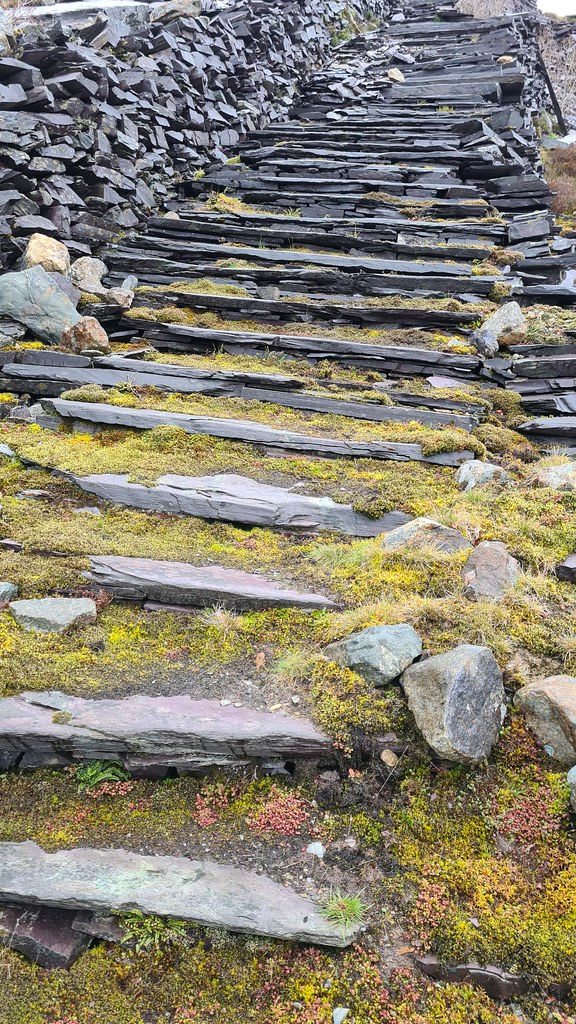
A quick look in this winding house:
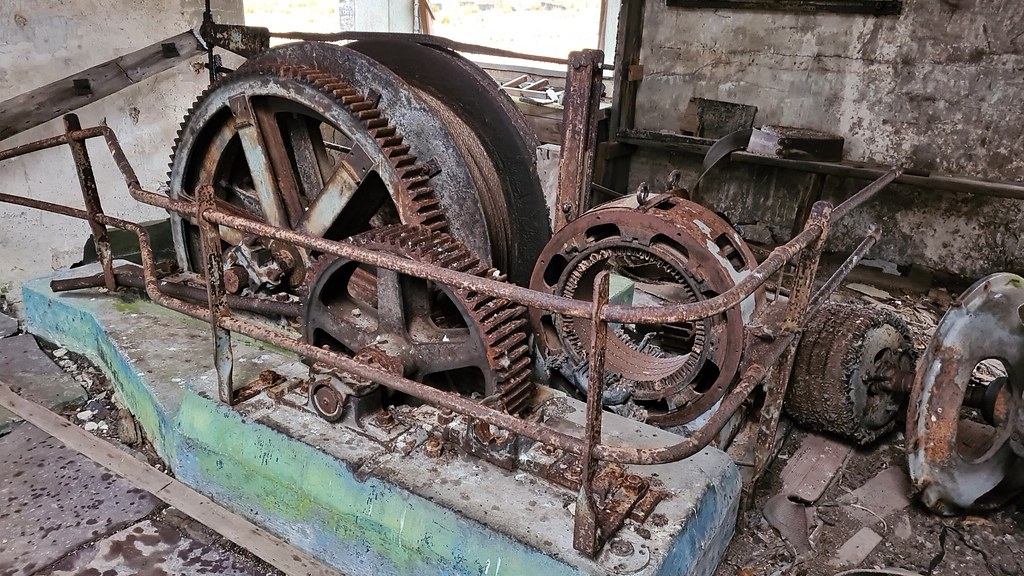
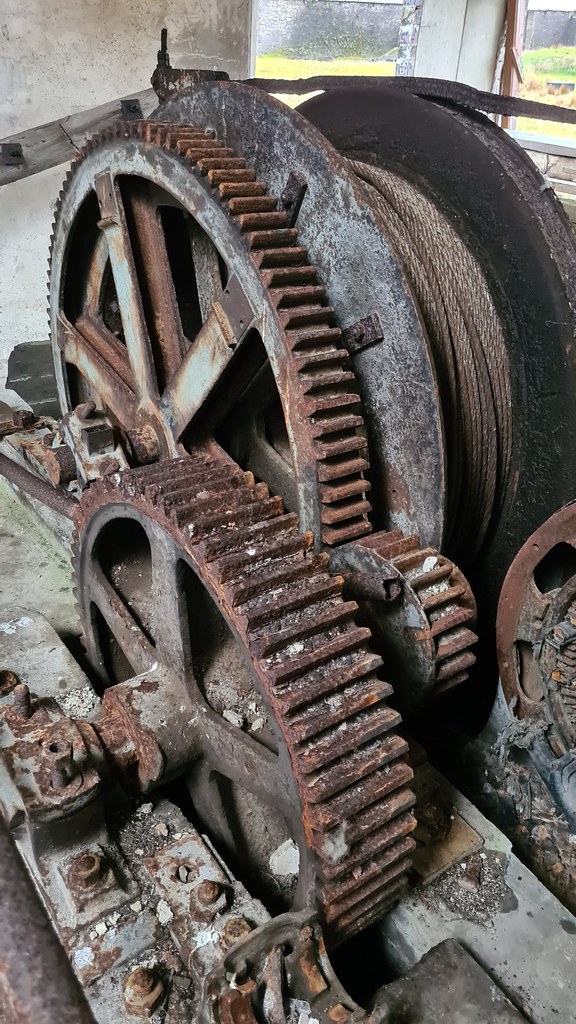
Before moving on to the now wide-open main shed:
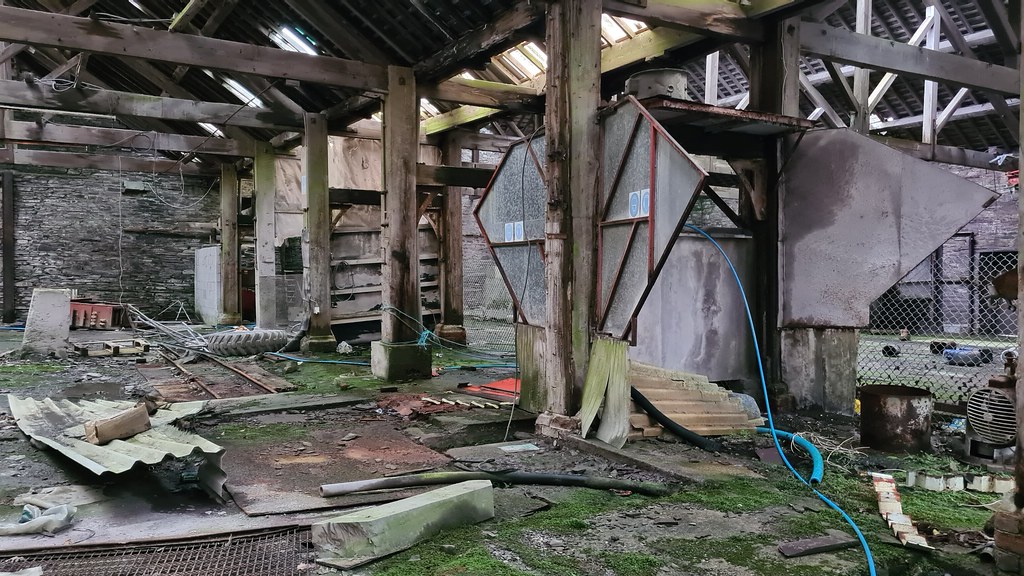
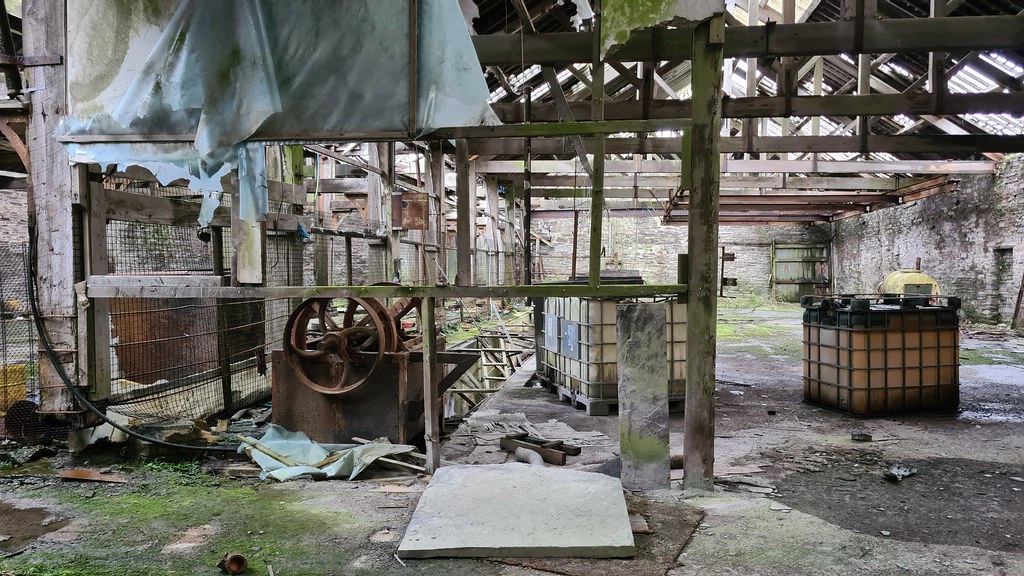
Some of the few things left behind in the top shed:
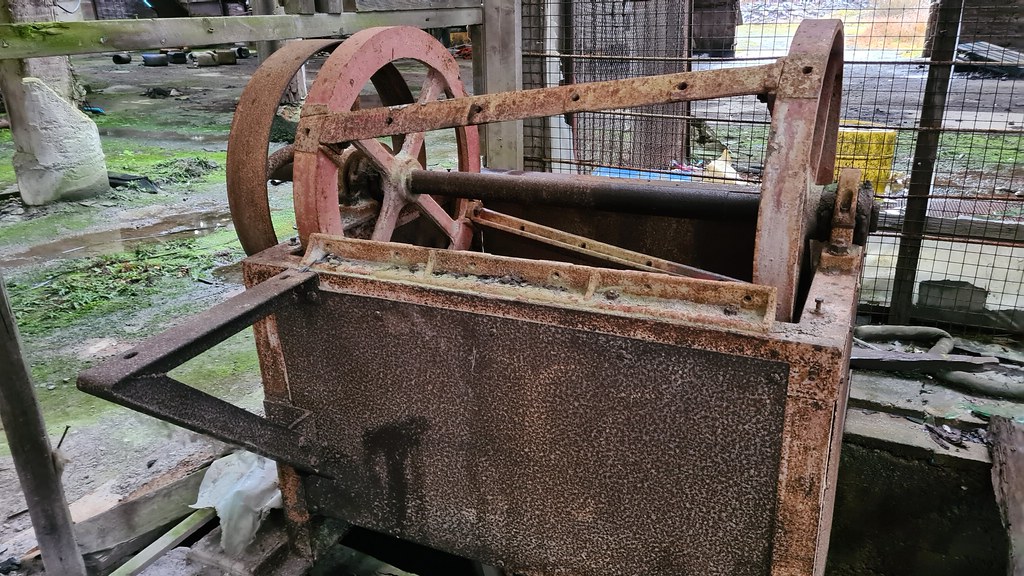
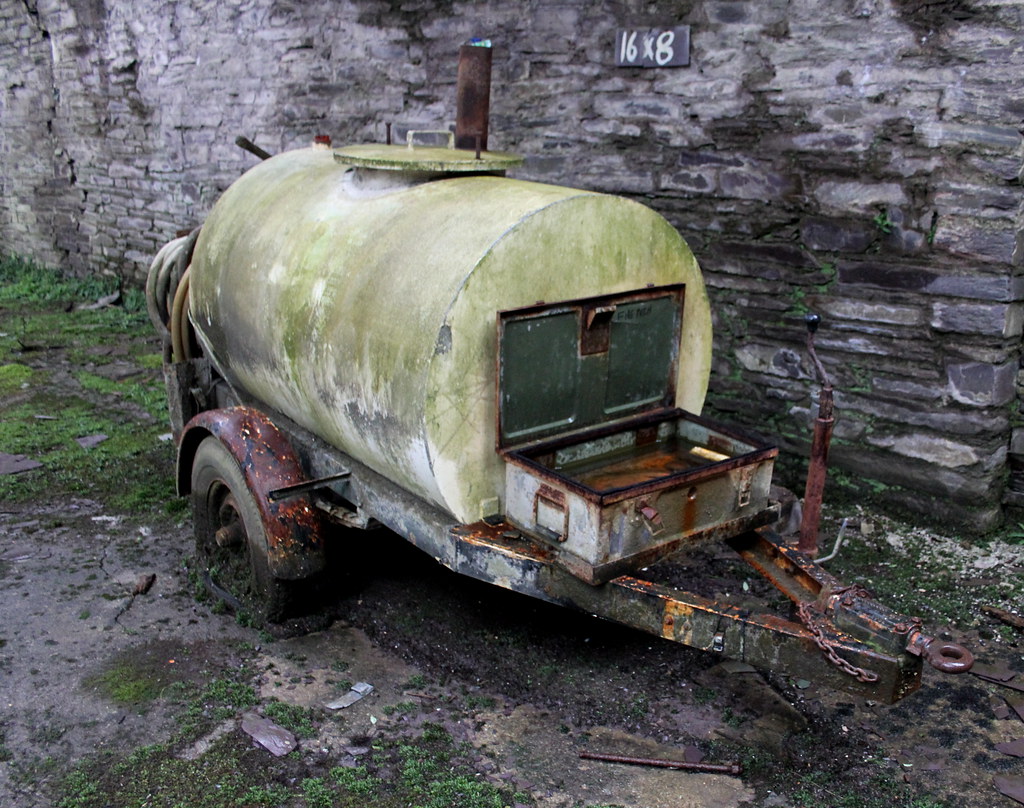
And some of the old electrics:
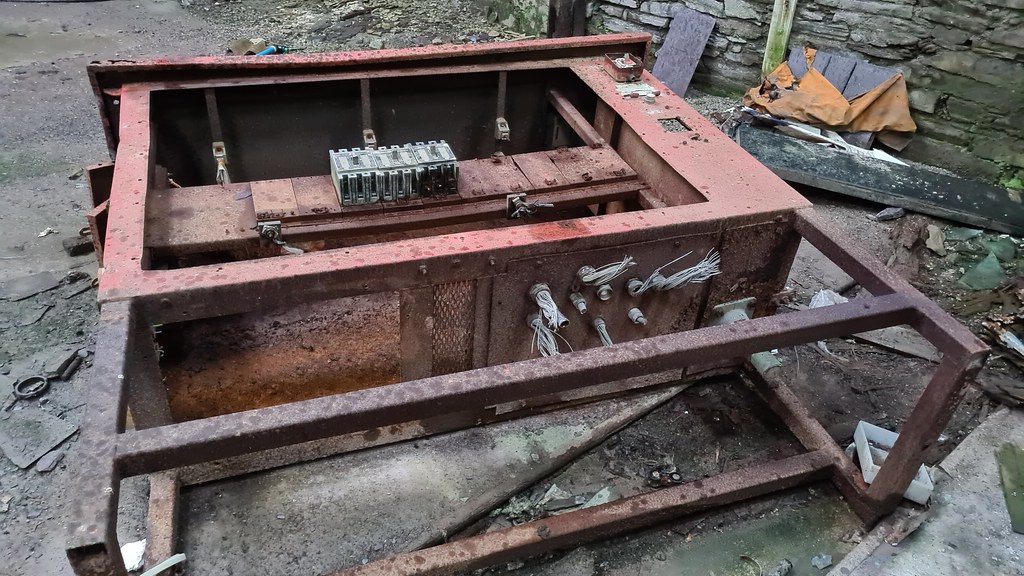
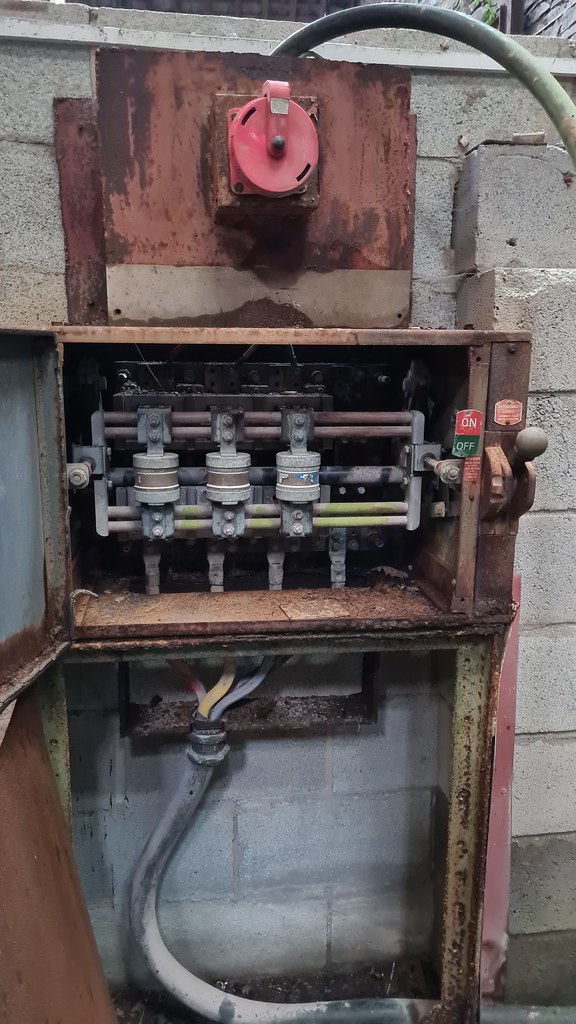
And this old dust-extraction system:
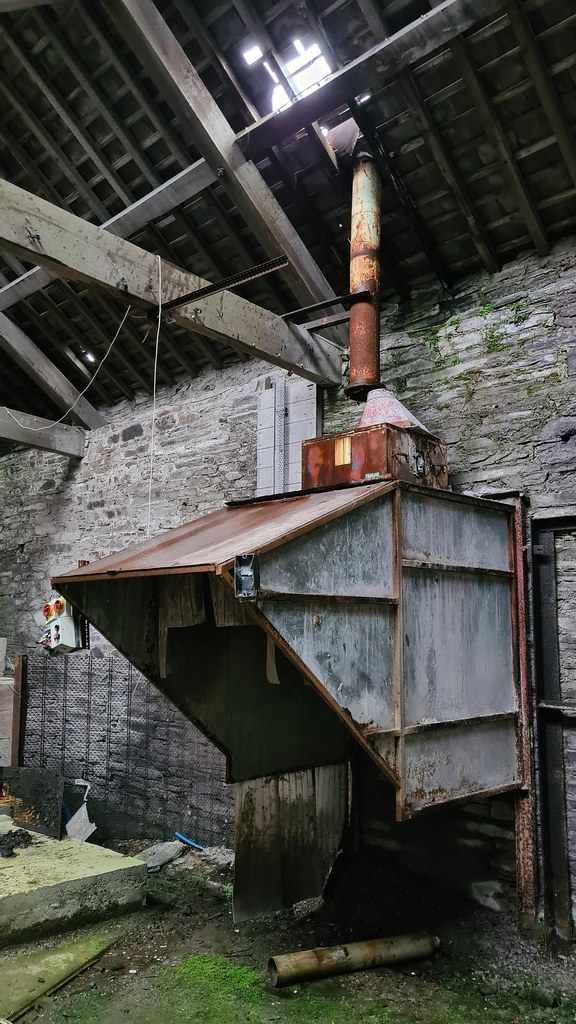
At that point was going to look at the few huts on the rim of the upper quarry and the quarry itself but with the rain siling down, thought better of it and headed back down.
Pen-yr-orsedd Slate Quarry is located near the village of Talysarn in the Nantlle valley in North Wales. It was first developed in 1816 as an open working, and subsequently, under the ownership of the Darbishire family, mills were built on three successive levels. The first mill was built in 1860 and two years later in 1862 the first connection to the 3 ft 6 in Nantlle railway was made which extended to all but the highest levels of the quarry. This allowed the carriage of slate to the quay at Caernarfon. A second integrated mill was added in 1870. In 1882 the number of men employed at the quarry had reached 230 men with an annual output of over 8,000 tons. Output further increased in the 1890s when a larger upper mill was built in 1898 as employment increased to over 600 men.
The quarry consisted of a series of pits and a series of four aerial ropeways known as 'Blondins' and their Bruce Peebles electrical equipment which were installed in 1906. These were able to lift trucks of slate from the pit and bring them to the side of the mills for processing.
O/S map extra from 1900 showing the Pen Yr Orsedd:

Key:
A – lower levels including the old slate mill
B – Mid levels including the admin block and wagon workshops
C – top levels including the blondins and main cutting shed
By 1937, despite the decline of the Welsh slate industry, there were still 351 workers employed at the site. When the Nantlle railway closed in 1963 road transport took over. It also the last quarry in the vale that commercially produced slate until its closure in 1979. The quarry remained in subsequent use, albeit on as small scale, and a lorry road was built down into one pit, rendering the ‘Blondins’ obsolete. After then until production ceased completely in about 2000 and the site has been abandoned ever since, bar the top-level mill which was used for storage.
2. The Explore
This one is a revisit for me. The last time I was here it was early one sunny July morning. With revisits, you always see things you didn’t see first time around plus different weather conditions, quite literally, cast a different light on places. This was very much the case here! The weather couldn’t have been worse. It was spitting when I first arrived but by the time I’d reached the top level, the weather had gone “Full Welsh”. Hence after I came out of the main shed, I headed straight back down to my car in the vain hope I wouldn’t get a complete soaking. This turned out to be an epic fail. But well worth the effort. So, not as epic as Dinorwic or Maenoffren but still a fab explore.
Previous report HERE. Report - - Pen-yr-orsedd Slate Quarry, Talysarn, North Wales, July 2020 | Mines and Quarries
3. The Pictures
And so the climb begins:

Saw these old buildings off in the woods to the left on the way up to the lower levels:




On to the lower level:





Quick peek in the old lower slate mill:


Pretty much a shell now:

These old drive shaft wheels are nice though:


And up to the next level. A flat-bed slate cutter:

First on to the admin/accommodation block:

Still some of the old range left here:

Not too sure what this was:

Otherwise it’s slim pickings here:

On to the wagon workshops:

In we go:

Wheel shaft drives:

Love this old slate cutter made by Robinson and Son’s of Rochdale:

Some sort of vertical cutting machine:

And this little fella a floor level:

An old grinding wheel:

And the cutest turntable you are ever likely to see:

Some old wooden storage:

Overall, a nice part of the quarry:

This looks like a dedicated storage area:

The proverbial rusty hook!

Looking back over the mid-levels:

And the miners steps up to the top level:

A quick look in this winding house:


Before moving on to the now wide-open main shed:


Some of the few things left behind in the top shed:


And some of the old electrics:


And this old dust-extraction system:

At that point was going to look at the few huts on the rim of the upper quarry and the quarry itself but with the rain siling down, thought better of it and headed back down.
Last edited:



